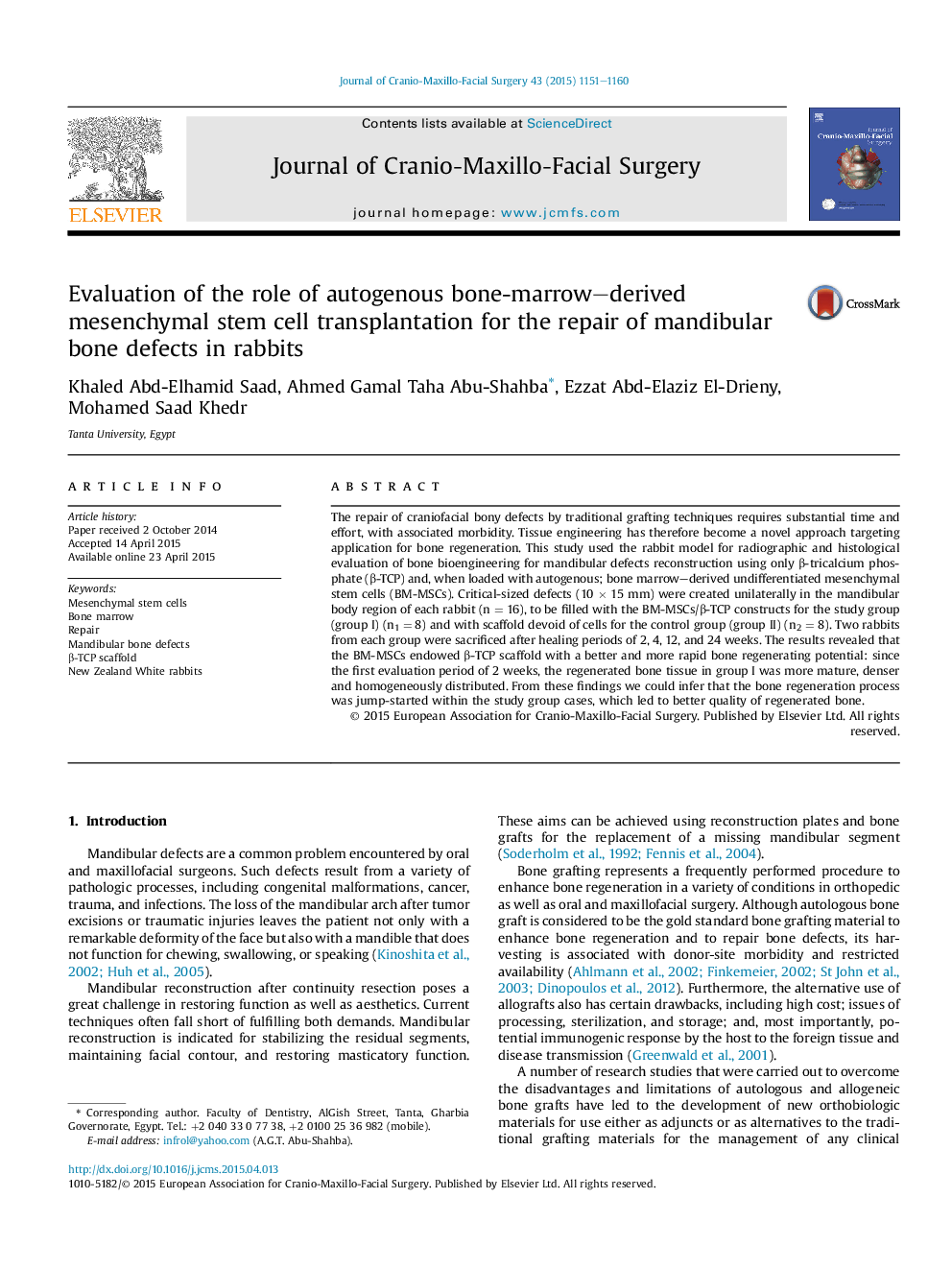| Article ID | Journal | Published Year | Pages | File Type |
|---|---|---|---|---|
| 3142357 | Journal of Cranio-Maxillofacial Surgery | 2015 | 10 Pages |
The repair of craniofacial bony defects by traditional grafting techniques requires substantial time and effort, with associated morbidity. Tissue engineering has therefore become a novel approach targeting application for bone regeneration. This study used the rabbit model for radiographic and histological evaluation of bone bioengineering for mandibular defects reconstruction using only β-tricalcium phosphate (β-TCP) and, when loaded with autogenous; bone marrow–derived undifferentiated mesenchymal stem cells (BM-MSCs). Critical-sized defects (10 × 15 mm) were created unilaterally in the mandibular body region of each rabbit (n = 16), to be filled with the BM-MSCs/β-TCP constructs for the study group (group I) (n1 = 8) and with scaffold devoid of cells for the control group (group II) (n2 = 8). Two rabbits from each group were sacrificed after healing periods of 2, 4, 12, and 24 weeks. The results revealed that the BM-MSCs endowed β-TCP scaffold with a better and more rapid bone regenerating potential: since the first evaluation period of 2 weeks, the regenerated bone tissue in group I was more mature, denser and homogeneously distributed. From these findings we could infer that the bone regeneration process was jump-started within the study group cases, which led to better quality of regenerated bone.
